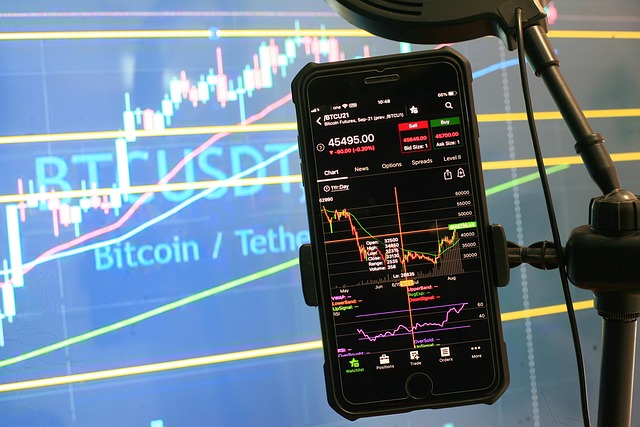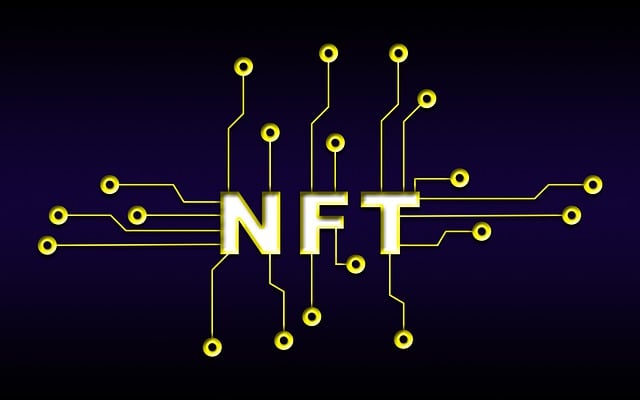Best Crypto Trading Bots 2024: Top Automated Strategies Compared
Author: Jameson Richman Expert
Published On: 2025-11-02
Prepared by Jameson Richman and our team of experts with over a decade of experience in cryptocurrency and digital asset analysis. Learn more about us.
The best crypto trading bots 2024 are changing how retail and professional traders approach the market — offering automated strategies, 24/7 execution, and backtesting tools that can save time and reduce emotional trading. This comprehensive guide reviews the top bots for 2024, explains how they work, compares features, and gives step-by-step recommendations to choose and safely deploy a bot. You’ll also find links to reputable resources, exchange connections, and actionable examples so you can start experimenting responsibly.

What is a crypto trading bot and why use one?
Crypto trading bots are software programs that connect to cryptocurrency exchanges via APIs and execute buy and sell orders according to pre-defined rules or algorithms. They range from simple dollar-cost averaging (DCA) scripts to advanced algorithmic systems employing momentum, arbitrage, or machine learning.
Key reasons traders use bots:
- 24/7 market coverage — crypto markets never sleep.
- Speed and precision — execute orders faster than manual trading.
- Backtesting — validate strategies on historical data before live trading.
- Discipline — remove emotional decision-making from repetitive trades.
- Scalability — run multiple strategies and portfolios simultaneously.
For an overview of algorithmic trading concepts and history, see the Wikipedia article on Algorithmic trading. For education on basic crypto trading concepts, Investopedia has helpful resources on algorithmic and automated trading.
How crypto bots work (brief technical overview)
Most bots operate through these components:
- Data feed — price, order book, and indicator data fetched from exchanges.
- Strategy engine — the ruleset or algorithm that decides when to buy/sell.
- Execution module — places orders via exchange APIs and manages position sizing, stop losses, and take-profits.
- Risk manager — limits exposure, sets maximum drawdown, and handles capital allocation.
- Backtester and simulator — evaluates strategy performance on historical data and in paper trading mode.
Most reputable bots use REST or WebSocket APIs to get market data and submit signed orders. API keys should be set with careful permissions (trading only, withdraw disabled) to limit risk if a key is compromised.
What to look for when choosing the best crypto trading bots 2024
Choosing a bot requires balancing features, security, pricing, and ease-of-use. Use this checklist as your starting point:
- Security: Does the provider store API keys? Are keys encrypted? Are withdrawals disabled? Do they offer two-factor authentication (2FA)?
- Exchange support: Does it support the exchanges you use (Binance, Bybit, Bitget, MEXC, etc.)? Example connections: Binance, MEXC, Bitget, Bybit.
- Strategy library & customization: Pre-built strategies (grid, DCA, trend-following) and the ability to customize or script your own rules matter for flexibility.
- Backtesting & paper trading: Robust backtest engine and realistic paper trading to validate before risking real capital.
- Fees & costs: Subscription fees, trading fees, and any performance-sharing models.
- Community & support: Active community, documentation, and fast support channels.
- Transparency: Open-source code or audited systems are preferable.

Top categories of bots in 2024
Different bots fit different trader profiles. Below are common categories and who they’re best for:
- Beginner / GUI bots: Easy-to-use, pre-configured strategies — best for novices.
- Advanced / scriptable platforms: For quants and developers who want to code strategies (Python, JavaScript).
- Arbitrage & market-making: Requires low-latency access and professional-grade exchanges.
- Grid & DCA bots: Passive strategies that perform well in range-bound markets.
- Signal-based bots: Execute trades based on third-party or social trading signals.
Best crypto trading bots 2024 — comparative list
Below are some of the most popular and well-regarded bots in 2024. Each entry includes strengths, weaknesses, and ideal user types. This is not financial advice — consider testing in paper mode first.
1. 3Commas
Overview: 3Commas is one of the largest retail bot platforms, known for its easy-to-use UI, SmartTrade terminal, and a wide library of pre-built bots (DCA, Grid, Options).
Pros: Multi-exchange support, copy-trading, SmartTrade, good backtesting, strong community.
Cons: Monthly subscription for advanced features, can be overwhelming for total beginners.
Best for: Intermediate traders who want a combination of ease and advanced customization.
2. Cryptohopper
Overview: Cloud-based bot offering marketplace signals, strategy designer, DCA and trailing features. Good for signal-based and strategy-building traders.
Pros: Marketplace of third-party strategies, cloud uptime, easy setup.
Cons: Quality of marketplace signals varies; subscription needed for advanced tiers.
Best for: Traders who want to test third-party signals and pre-built strategies quickly.
3. HaasOnline
Overview: A more advanced platform favored by quantitative traders. Offers scriptable strategies (HaasScript), backtesting, and high configurability.
Pros: Extremely customizable, powerful backtesting, options for market-making and advanced automation.
Cons: Steeper learning curve; desktop-based/hosted options can be more technical to run.
Best for: Experienced algorithmic traders who want full control and scripting power.
4. Bitsgap
Overview: Popular for arbitrage, grid trading, and portfolio management. Clean UI and cross-exchange trading support.
Pros: Good grid bot implementation, demo mode, multi-exchange trading panel.
Cons: Arbitrage potential limited by exchange liquidity and fees.
Best for: Traders looking to run grid strategies and manage multiple exchange accounts centrally.
5. Pionex
Overview: Exchange-native bot marketplace with built-in bots (grid, DCA, arbitrage) and low fees because bots run on-exchange.
Pros: Low fees, easy to start, no external API needed.
Cons: Less customizable than standalone platforms; limited exchange selection (bots run on Pionex exchange).
Best for: Beginners who prefer an all-in-one exchange + bot experience with minimal setup.
6. Trality
Overview: Python-based bot platform allowing coding, backtesting, and scheduled live runs. Offers both “Rule Builder” and full-code “Code Editor”.
Pros: Great for developers, clean backtester, cloud-hosted bots.
Cons: Requires coding for best results.
Best for: Developers and quants who want to deploy Python strategies to major exchanges.
7. Coinrule
Overview: GUI-driven rule builder aimed at beginners who want to create automated strategies without code.
Pros: Easy to create rules, good educational resources, marketplace templates.
Cons: Limited deep customization; advanced quant needs might be unmet.
Best for: Novices and non-programmers who want visual strategy building.
8. Zignaly
Overview: Signal-following and copy-trading bot with integrated external signals marketplace.
Pros: Low-cost signal following, marketplace transparency, ROI tracking.
Cons: Signal quality could vary; due diligence required.
Best for: Traders who want to follow experienced signal providers rather than coding strategies.
9. KuCoin Bot (Built-in)
Overview: Major exchanges increasingly provide native bot solutions (KuCoin, Binance, etc.). These are often easier to set up and integrate directly with exchange accounts.
Pros: No external API keys required for exchange-native bots, low friction, sometimes lower fees.
Cons: Limited to exchange features and liquidity; portability is restricted.
Best for: Traders who prefer minimal setup and trust the exchange environment.
Practical examples of strategies to run with bots
Below are common strategy templates with actionable parameters to test in paper mode:
Grid bot example (range trading)
- Market: BTC/USDT
- Capital: $1,000
- Range: $50,000 — $70,000 (adjust to current volatility)
- Grids: 20
- Take profits per grid: 0.5% — 1.0%
- Stop-loss: optional, or exit if price breaks range by >10%
Grid bots perform well in sideways markets, capturing profit from oscillations. Backtest across the last 6 months to estimate number of trades and fees impact.
DCA bot example (cost averaging)
- Market: ETH/USDT
- Capital: $600
- Buy schedule: $50 every 7 days for 12 weeks
- Optional stop-loss / rebalancing rules
DCA reduces timing risk in volatile markets. It’s passive and simple to automate for accumulation strategies.
Trend-following example (momentum)
- Indicators: 21 EMA cross 50 EMA + RSI confirmation (RSI > 55)
- Position sizing: 2% portfolio per trade
- Trailing stop: 4% or ATR-based trailing
Trend-following aims to capture large moves but requires good risk control to avoid frequent small losses during choppy markets.

How to safely set up and operate a trading bot
Security and proper planning are crucial.
- Create a dedicated exchange account or sub-account — never use your main exchange account that holds long-term storage funds. Many exchanges like Binance offer sub-accounts for API-limited automation.
- Use API keys with least privileges — enable trading only; disable withdrawals and IP-restrict API keys if possible.
- Start with paper trading/backtesting — validate your strategy on historical data and run in demo mode for several market cycles.
- Limit allocation — don’t allocate full portfolio to an unproven bot. Start small (1–5% of capital) and scale once you saw consistent results.
- Monitor and maintain — bots can fail due to API changes or exchange downtime. Set alerts and periodically review logs.
- Keep software updated — use reputable, up-to-date platforms and check for security advisories.
- Understand fees & slippage — frequent trading increases fee drag. Use exchanges with competitive maker fees or fee discounts where possible.
For beginner-friendly strategy blueprints and step-by-step guides, consider reading the practical beginner blueprint at this beginner guide: Simple Crypto Trading Strategy — Practical Beginner Blueprint.
Backtesting and performance evaluation metrics
Key metrics to evaluate your bot strategies:
- Total return — percentage gain/loss over the tested period.
- Annualized return — useful for comparing across strategies.
- Max drawdown — largest peak-to-trough decline during the period; critical for risk tolerance assessment.
- Sharpe Ratio — return adjusted by volatility (useful for risk-adjusted comparison).
- Win rate and average win/loss — helps understand trade quality and expectancy.
- Number of trades and fees impact — frequent trading erodes returns through fees and slippage.
Ensure your backtester includes realistic assumptions about fees, slippage, and fill rates. Many bots provide built-in backtesters; for advanced setups, consider using Python libraries and historical data dumps.
Common pitfalls and how to avoid them
- Overfitting: Optimizing a strategy to historical noise leads to poor live performance. Use walk-forward analysis and out-of-sample testing.
- Ignoring fees: Frequent small profits can be wiped out by maker/taker fees. Include fees in backtests.
- Poor risk management: Position sizing and stop-loss rules are as important as entry signals.
- Leverage misuse: Bots can easily magnify losses when using leverage. Use leverage cautiously and understand liquidation risks.
- Blind trust of signals: Always validate third-party signals and monitor performance over time.

Where to find reliable educational materials and additional reading
Learning good strategy design is as important as choosing the bot. Reliable resources include:
- General algorithmic and automated trading primer: Wikipedia — Algorithmic trading
- Investor protection resources and regulatory information (US SEC): SEC investor alerts
- Strategy PDFs and downloadable guides — for example a detailed BTC trading strategy PDF: Bitcoin Trading Strategy PDF — Complete Guide.
- Mobile trading and app reviews to monitor bot performance: Comprehensive Trader App Review.
Choosing the right exchange & connecting your bot
Bot performance is tightly coupled with exchange selection. Consider these factors when choosing an exchange:
- Liquidity for your trading pairs (higher liquidity reduces slippage).
- API stability and rate limits.
- Fees and fee-tier discounts (maker vs taker).
- Security and reputation.
Popular exchanges commonly used with bots include Binance, Bybit, Bitget, and MEXC. You can create accounts through these links:
When connecting a bot, generate an API key on your exchange with trading permissions enabled and withdrawal disabled. If possible, limit API access by IP to the bot provider’s servers.
Bot pricing and cost-effectiveness
Bot pricing models typically include:
- Subscription fees (monthly or yearly) — fixed cost regardless of performance.
- Performance fees — percentage of profits (less common for retail bots).
- Exchange fees — the bot pays exchange trading fees on your behalf.
- Hidden costs — slippage, funding fees for perpetual futures when using leverage.
When evaluating ROI, factor in subscription fees, expected trading frequency, and exchange fees. A low-cost bot that makes many small trades might still underperform a higher-cost bot that makes fewer, higher-quality trades.

Advanced topics: AI, ML, and custom quant bots
In 2024, more platforms promote AI/ML-driven strategies. These can be powerful but come with caveats:
- Data quality: Machine learning models are only as good as the data and features used.
- Explainability: Black-box models can behave unpredictably in regime changes.
- Overfitting risk: ML models easily overfit on limited historical crypto data unless regularized and validated.
If you’re serious about quantitatively-driven bots, consider building with Python, using libraries such as Backtrader, pandas, and scikit-learn — and always perform out-of-sample testing.
Checklist: Launching your first live bot — step-by-step
- Pick an exchange and create an account (use links above if needed).
- Create a separate API key with trading-only permissions and IP restrictions.
- Select a bot platform that fits your skill level (GUI vs code).
- Backtest and paper-trade your strategy for several months of market data.
- Start with a small live allocation (1–5% of portfolio).
- Monitor logs and performance daily in the first weeks; set alerts for anomalies.
- Scale slowly if results are consistent and risk-adjusted metrics are acceptable.
Regulatory and tax considerations
Automated trading does not exempt you from regulatory or tax obligations. Keep detailed trade logs and consult tax guidelines in your jurisdiction. For US investors, the SEC and IRS provide guidance on crypto investments — check official resources like the SEC or your local tax authority for current reporting rules.

Final recommendations — how to pick the best crypto trading bots 2024 for you
There’s no single “best” bot for everyone. Match the bot to your goals:
- Absolute beginner: Choose exchange-native bots or user-friendly platforms like Pionex or Coinrule. Use DCA/grid templates and keep allocations small.
- Intermediate trader: Consider 3Commas or Cryptohopper for a mix of visual tools and strategy customization.
- Developer/quant: Trality, HaasOnline, or building custom Python bots on cloud hosts will offer the most flexibility.
- Signal follower: Use platforms with transparent signal marketplaces (Zignaly, Cryptohopper marketplace) and evaluate provider track records.
Keep security and risk management top of mind. For a practical beginner’s trading blueprint and templates, revisit the beginner blueprint guide: Simple Crypto Trading Strategy — Practical Beginner Blueprint. For strategy templates and a deeper Bitcoin trading PDF, see Bitcoin Trading Strategy PDF — Complete Guide. To choose a mobile monitoring app for your bots and trades, review the app comparison guide: Comprehensive Trader App Review.
Conclusion
The best crypto trading bots 2024 offer powerful tools that can automate disciplined trading, free you from screen time, and test ideas faster than manual trading. Success depends less on the tool and more on sound strategy design, rigorous testing, disciplined risk management, and strong security practices. Start small, validate thoroughly with backtesting and paper trading, and use exchange-hosted or well-known platforms to minimize operational risk.
Ready to experiment? Open an exchange account to connect a bot and start in demo mode: Binance, MEXC, Bitget, and Bybit provide solid infrastructure for automated trading. Always treat automated trading as a learning process — iterate, measure, and improve.
Disclaimer: This article is for educational purposes only and does not constitute financial, investment, or tax advice. Always do your own research and consult a professional when needed.